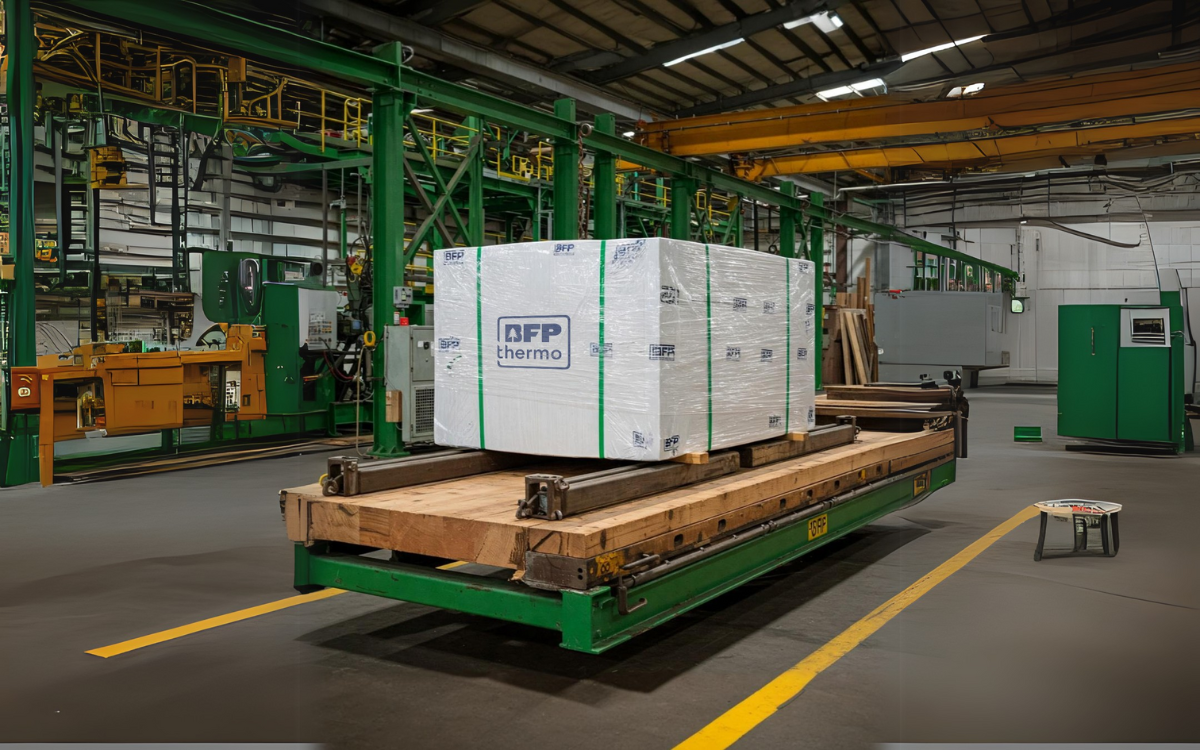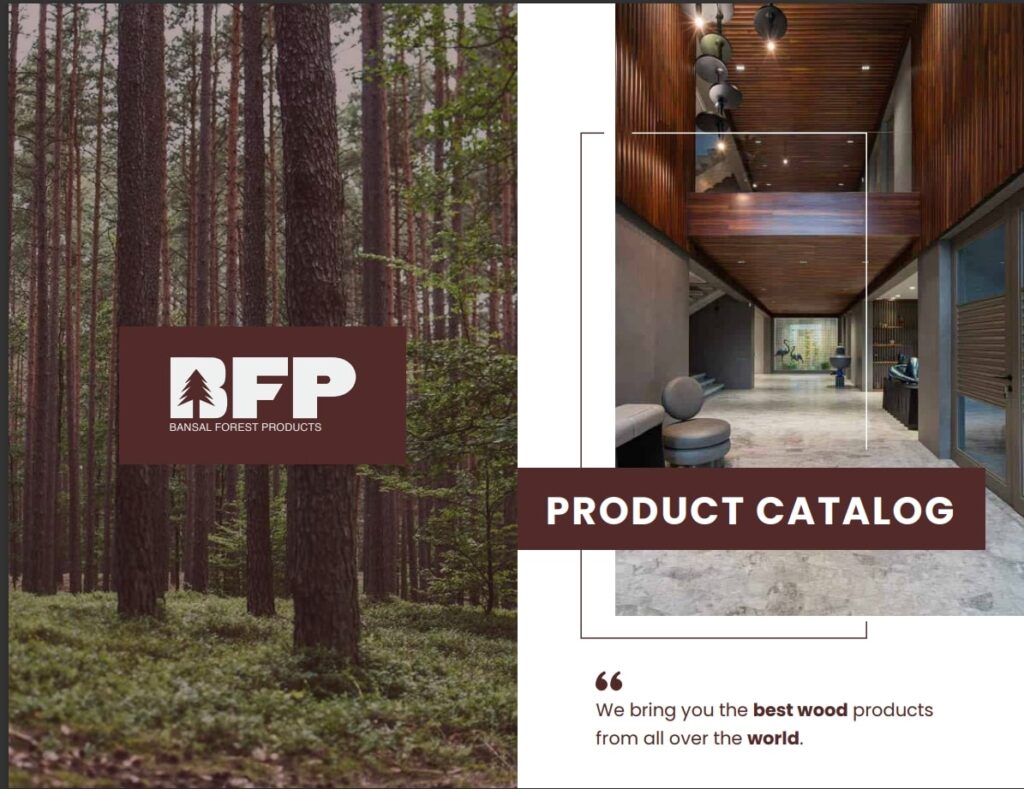The need to nurture wellness in architecture has been felt lately, and the profession is therefore witnessing some subtle yet major change: there is emphasis on sensory awareness rather than on pure exhibition. Wellness architecture, as it is referred to today, is grounded on a very simple premise: an environment has to actively encourage health and well-being.
Standing tall at the forefront of the revolution is an unusual hero: Thermopine.
What does Thermopine refer to, and why is it so special?
Thermopine is thermally modified pine wood treated at various high temperatures (usually 160°C-220°C) in a low-oxygen environment. This technique changes the wood, making it more durable.
Resistant against rot and inBut beyond durability and sustainability, thermopine is increasingly being recognized for something deeper — its sensory and emotional impact on space and people.
Why Thermopine Belongs in Wellness Settings?
There are many reasons which show why Thermopine belongs in wellness settings. Scroll down to learn more about them.
1. The Biophilic Connection.
Wellness architecture acts to promote biophilic design, connecting building occupants to nature. The natural textures, fragrance, and colours of Thermopine facilitate tranquil environments to really reduce stress and improve feelings, a very important thing for schools, offices, hospitals, and homes.
According to research, natural materials such as wood can help:
- Lower blood pressure.
- Reduce cortisol levels.
- Improve your concentration.
- Improve general well-being.
Thermopine, with its rich texture and inviting appearance, becomes more than just a building material; it is an emotional component of the room.
2. Is Aromatherapy in disguise?
Thermal treatment does more than only improve durability; it also enhances the natural pine fragrance. The delicate, earthy scent of thermopine operates almost like natural aromatherapy in health environments such as yoga studios, spas, and meditation rooms, anchoring the mind and increasing relaxation.
3. Texture that appeals to the senses.
Unlike polished metals or frigid tiles, thermopine provides a tactile richness that creates a sense of intimacy and safety. Consider sauna walls, barefoot-friendly flooring, or cosy cabin ceilings; thermopine’s warmth and softness create a welcoming atmosphere.
Innovative Wellness Spaces Using Thermopine
Let’s look at how forward-thinking architects are using thermopine in surprising ways:
- Urban Retreats: City wellness centers are incorporating thermopine in façade cladding, combining aesthetics with acoustic insulation for noisy urban settings.
- Therapeutic Clinics: Mental health centers now prefer thermopine-lined rooms for therapy sessions, due to its calming visual and olfactory cues.
- Eco-Resorts: Luxury eco-lodges use thermopine for cabins, walkways, and decks to connect guests with the environment.
- Healing Gardens: Outdoor spaces are integrating thermopine benches, pergolas, and fencing to create natural, toxin-free environments for relaxation.
Sustainability: Wellness for the Planet Too
Wellness isn’t just about the individual — it’s about our planet. Thermopine checks that box too:
- Sourced from sustainable forests (mostly Nordic pine)
- No toxic chemicals are used in processing
- Longer life span means fewer replacements and less waste
- Carbon neutral or even carbon negative when used in large architectural projects
As architects and clients look for holistic wellness — personal + planetary — thermopine hits both targets with ease.
Thermopine in Passive House and Green Building Design
Green-certified buildings, like Passive Houses and LEED projects, are increasingly embracing thermopine because of its:
- Low thermal conductivity
- Moisture regulation (reduces mold and improves indoor air quality)
- Compatibility with airtight, energy-efficient envelopes
It’s no longer just about looking good; it’s about contributing to the overall health of the indoor climate
Is Thermopine the Future of Calm Design?
In a post-pandemic world, where stress levels remain high and remote work blurs the lines between professional and personal space, people are craving calmness.
Thermopine represents a design shift towards what some are calling “emotional architecture” — creating buildings that don’t just function, but feel right.
- Want better focus in your home office? Use thermopine cladding for walls.
- Need restful sleep? Try thermopine ceilings in your bedroom.
- Designing a mindful space? Thermopine floors with warm lighting do the trick.
Challenges and Considerations
Like any material, thermopine has trade-offs:
- Cost: Slightly more expensive than untreated pine, though less than tropical hardwoods
- Availability: Not yet widely available in all markets
- Color Fading: Needs occasional oiling for outdoor applications to retain its rich tones
Still, the long-term benefits far outweigh the challenges, especially when wellness is the focus.
The Neuroscience of Wood: Why Thermopine Feels So Good.
Modern neuroscience confirms what builders have intuitively known for years: natural materials such as Thermopine not only look nice, but also feel good, because our brains are designed to respond to nature.
According to neuroarchitecture studies, spaces with organic textures, such as wood, engage the parasympathetic nervous system, which is responsible for relaxation and healing. The patterns in wood grain elicit favourable emotional responses known as “fractal fluency,” which describes our brain’s ease in interpreting complicated yet familiar patterns seen in nature.
The surface, grain, and aroma of thermopine all send a subtle “safety” signal to our subconscious. This leads to the following:
- Reduced anxiety levels
- Increased emotional resilience.
- Reduced heart rate
- Improved cognitive clarity
Wellness Cities of Tomorrow: Thermopine as a Pillar of Urban Design
As cities evolve to fulfil the wellness needs of dense populations, Thermopine is emerging as a hidden cornerstone in the construction of urban micro-sanctuaries.
- Forward-thinking city planners are incorporating Thermopine into
- Rooftop Wellness Hubs
- Sound-absorbing cladding in crowded urban areas
- Underground meditation pods.
- Bio-sensitive parklets in business districts.
Why? Because Thermopine helps to restore natural calm in overstimulated situations. Its acoustic dampening properties help to reduce noise pollution. The toxin-free finish enhances air quality. Furthermore, its aesthetic softness provides visual foundation in concrete-heavy environments.
When combined with smart city technology and green energy, Thermopine could help build what urbanists refer to as “cities of soft resilience” — infrastructure that actively nurtures the people who live within it rather than simply surviving.
Conclusion: Thermopine is more than just wood.
While it may have begun as a “thermally modified pine,” thermopine is quietly transforming how we create and experience constructed environments. From mental health clinics to eco-resorts, home sanctuaries to urban wellness pods, it’s allowing us to reconnect with nature, manage stress, and live more mindfully.


